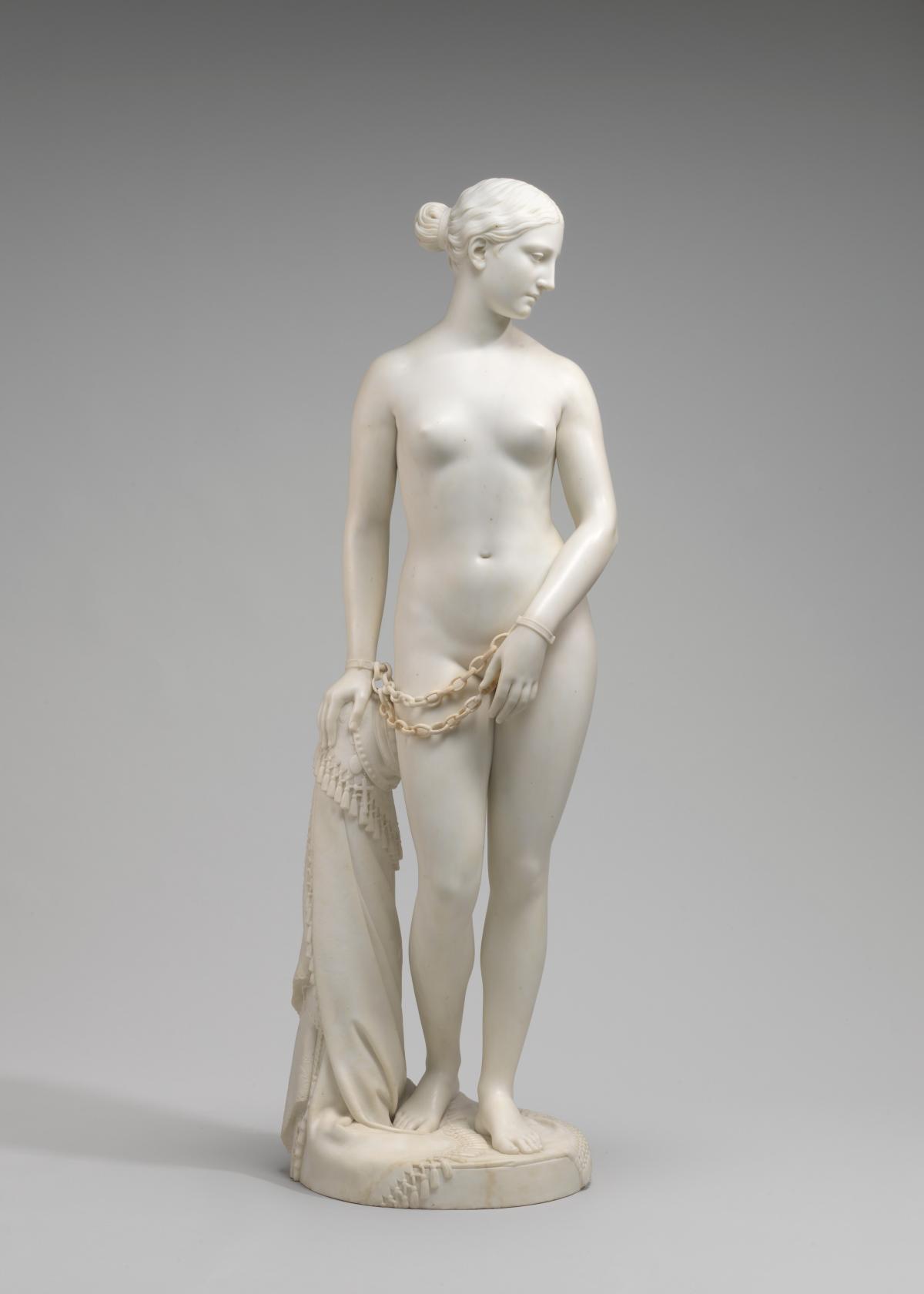Based on the original 1841-1843 model, this particular iteration of the statue was carved by Powers in 1846. Though the woman's figure and form would remain essentially the same in each successive version, this statue includes the smaller chain connecting the shackles around her wrists that would later be replaced by longer, thicker links that, in Powers's view, took less time and effort to carve.
Image Source: The National Gallery of Art
Associated events
Associated Places
Copyright
©
Vetted?
No


